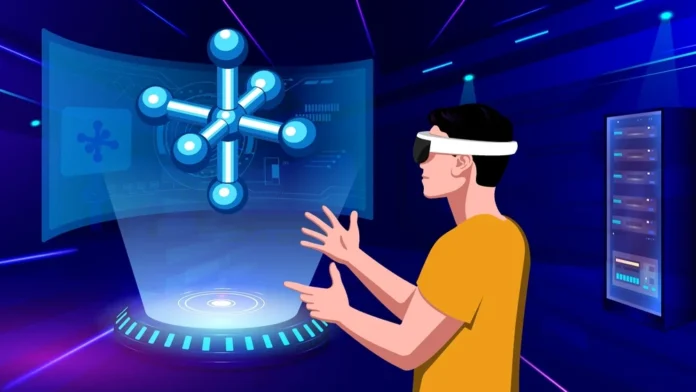Augmented reality (AR) is revolutionizing the ecommerce industry. With AR technology, you can provide immersive and interactive shopping experiences that allow customers to engage with products in new dimensions visually. Brands that have adopted or are willing to adopt the new technology into their services and shopping experience can attract more customers and increase the popularity of their products. There are different types of AR services that you can choose from. Here, we will discuss WebAR in E-commerce.
Understanding WebAR in E-Commerce
WebAR is a type of AR useful in E-commerce. It allows users to view Products in an AR environment through a web-based browser or service without using any specialized application, device, or platform. This makes using WebAR very convenient for users to use and increases its adaptation. Companies can use it easily as they can take the help of different tools and platforms that provide the service to integrate WebAR into their products. The two most common WebAR types are – WebAR image tracking and markerless WebAR.
Benefits of Implementing WebAR for E-commerce
Some major benefits of WebAR in E-commerce are-
More Confident Purchasing
One of the biggest benefits of WebAR is that it allows your customers to “try before they buy” right from their browser by scanning a QR code or directly through your company’s website. For example, virtual try-on allows customers to see what items like makeup, jewelry, eyewear, and clothing would look like on themselves before purchase. It can help to reduce doubt, minimize returns, and give shoppers more confidence to purchase items online.
Life-Size and True-Perspective Visualization
WebAR also lets shoppers visualize products in their actual living spaces at real size, with correct perspectives. This complete real-time exposure is often missing in the 2D product images. With Augmented Reality, customers can place lifelike 3D models of furniture, décor, and appliances in their homes. This helps them determine if products fit their spaces properly before buying.
Detailed and Interactive Exploration
WebAR also enables shoppers to inspect products closely from all angles by spinning, zooming into surface materials and textures, taking cross-sections of products to view interiors, and more. Shoppers can even interact with 3D models, exploring features and configurations to understand various products like electronics and appliances better. This brings a level of visualization not possible with images alone and is a major reason people often prefer physical shops.
Novelty and Gamification
Due to repetitive actions, shopping is a very boring subject for many people in online and physical spaces. Still, with WebAR, you can finally add a novel and fun experience for your customers while they shop. This can be related to the model of the product or the environment. Many things can be improved to make the shopping experience better.
Top WebAR Use Cases and Examples
Virtual Try-On
One of the most popular e-commerce uses for WebAR is virtual try-on. Major beauty brands like L’Oréal and Estée Lauder now offer virtual testing for makeup products, allowing users to try on shades without the need for physical testers.
Nike’s introduction of virtual try-on in the form of NIKE Fit has proven to be a significant catalyst for contributing to a robust performance of $13.315 billion in November 2022, with expectations of a 17.24% year-over-year increase in the coming period.
Immersive Product Visualization
Wayfair lets you virtually set up entire rooms using WebAR so you can see how the furniture fits before you buy. At Made.com, you can play around with fabrics and colors on 3D models of sofas to create your look. These are some of the major examples of How WebAR is leading the trend for immersive product visualization that is easily accessible.
Interactive Gaming/Challenges
Many brands have bought WebAR-based campaigns and games for their customers to improve their experience. Pizza Hut bought classic Pac-man games for their customers that they can enjoy when scanning a QR code on the box. Other brands like LEGO have also bought similar games that customers can enjoy when they buy a product or visit their site.
The Future of WebAR in E-commerce
While still early in adoption, WebAR applications in online retail diversify in usage and scale rapidly. According to a study, the e-commerce and retail industry’s popularity towards augmented reality (AR) will skyrocket, reaching a market value of $6.74 billion by 2028. The compound annual growth rate (CAGR) is anticipated to be 20% during the forecast period from 2022 to 2028.
This forecast underscores the increasing significance and rapid adoption of AR technologies in shaping the future of the e-commerce and retail landscape. As the technology and infrastructure improve over this decade, WebAR is positioned to transform how consumers research, evaluate, and pre-experience products, accelerating purchasing confidence and retail growth globally. The future of e-commerce will be undeniably visually immersive, thanks to augmented reality.
Conclusion
With WebAR, you can further improve the customer experience and accessibility of your products and services. With the growth of virtual and interactive reality-based services in E-commerce and other spaces, it will be one of the major trends in the next half of the decade, with more and more brands adopting it as the standard. If you are willing to boost how your eCommerce store works, start creating WebAR product visualization on the canvas of no-code platforms like PlugXR. Try out their forever-free version to get started.


